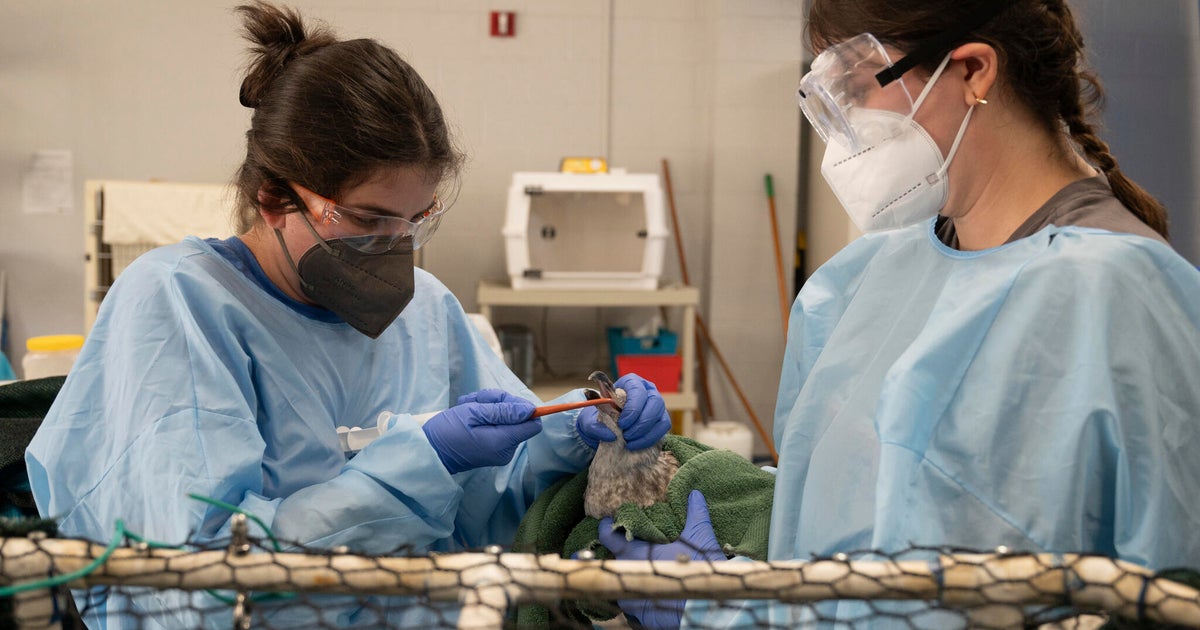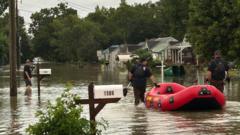What’s Causing the Surge of Sick and Dying Seagulls in Southern California?

Understanding the Unusual Surge in Sick and Dying Seagulls Along the Southern California Coastline
In recent weeks, Southern California has witnessed an alarming increase in sick and dying seagulls, prompting wildlife officials to launch an investigation. The International Bird Rescue, based in San Pedro, reported that since July 25, they have encountered 16 Western Gulls displaying a range of concerning symptoms. This surge is part of a broader pattern of wildlife distress in the region, raising questions about the health of local ecosystems and the impacts of environmental factors. In this article, we will delve into the details of this situation, explore potential causes, and discuss what can be done to help these vulnerable birds.
The Symptoms and Initial Findings
The symptoms observed in the affected seagulls are alarming and include:
- Dehydration
- Difficulty standing
- Partial or complete paralysis
- Confusion
- Difficulty blinking
- Respiratory distress
Some birds have tragically been found dead along the coastline, highlighting the severity of the situation. Initial tests conducted on three of the earliest cases for avian influenza returned negative results. However, the outcomes of more recent tests are still pending, leaving the source of the illness uncertain.
Geographic Spread of the Illness
The seagulls exhibiting these troubling symptoms have been reported along a stretch of coastline spanning from Malibu and Venice to Redondo Beach in the South Bay. This geographic spread raises concerns about the potential for a widespread health crisis among avian populations in Southern California. Understanding the factors contributing to this outbreak is crucial for wildlife officials and the public alike.
Recent Trends in Wildlife Health in Los Angeles County
The surge in sick seagulls is not an isolated incident but part of a broader trend of wildlife illnesses in Los Angeles County. Earlier in the year, the area faced significant challenges with other marine animals:
- In February, a massive outbreak of domoic acid poisoning affected dozens of sea lions, leading to hospitalization.
- By April, wildlife officials were inundated with cases of brown pelicans suffering from similar poisoning.
- In Venice, a mysterious illness resulted in the deaths of at least six dogs and left many others ill, with investigations ongoing by public health officials.
These incidents suggest that the health of local wildlife is under significant threat, possibly due to environmental toxins, changes in food sources, or other ecological pressures.
Possible Causes of the Seagull Illness
While the exact cause of the current illness among seagulls remains undetermined, several factors could contribute to their deteriorating health:
- Domoic Acid: This neurotoxin, produced by certain algae, can accumulate in fish and other marine organisms that seagulls feed on. It has previously caused widespread illness in marine life in the region.
- Environmental Pollution: Chemicals and pollutants entering the marine ecosystem can have detrimental effects on wildlife health. Heavy metals, microplastics, and agricultural runoff are just a few examples of potential pollutants.
- Climate Change: Shifts in climate patterns can affect food availability and habitat conditions for seagulls and other wildlife, potentially leading to malnutrition and increased susceptibility to diseases.
- Infectious Diseases: While initial tests for avian influenza returned negative, other infectious diseases may still be at play, warranting further investigation.
Understanding these potential causes is vital for developing effective responses to protect both seagulls and the broader ecosystem they inhabit.
How to Help Affected Seagulls
Members of the public can play a crucial role in assisting wildlife during this crisis. Here are some steps you can take if you encounter a sick or injured seagull:
- Observe from a Distance: If you see a seagull showing signs of illness, maintain a safe distance. Avoid approaching or handling the bird, as it may be stressed and more vulnerable.
- Report the Sighting: Contact the Bird HelpLine at (866) 767-2473 to report the sick bird. Provide as much detail as possible, including the location and observed symptoms.
- Educate Others: Raise awareness about the situation among friends and family. Informing others can help increase vigilance and reporting of sick birds.
- Avoid Feeding Wild Birds: While it may be tempting to feed birds, this can exacerbate health issues and lead to dependency on humans for food.
Taking these steps can contribute to the conservation efforts aimed at safeguarding the health of seagulls and other wildlife in the region.
The Importance of Wildlife Rehabilitation Centers
Wildlife rehabilitation centers, such as the International Bird Rescue, play a critical role in addressing wildlife crises like the surge in sick seagulls. These organizations provide essential care for injured and ill birds, working tirelessly to rehabilitate them for return to the wild. They also engage in research and advocacy to address the underlying causes of wildlife health issues.
Support for these organizations is vital, as they rely on donations and community involvement to continue their work. By supporting local wildlife rehabilitation centers, you contribute to the preservation of avian populations and the health of coastal ecosystems.
FAQs
What should I do if I find a sick seagull?
If you find a sick seagull, observe it from a safe distance and do not attempt to handle it. Report your sighting to the Bird HelpLine at (866) 767-2473, providing details about the bird’s condition and location.
Are there any known diseases affecting seagulls right now?
Currently, there is an investigation into the surge of sick seagulls, with initial tests for avian influenza returning negative. Other potential causes, such as domoic acid poisoning and environmental pollution, are being explored.
How can I help wildlife in my area?
You can help wildlife by observing and reporting sick animals, spreading awareness about wildlife health issues, and supporting local wildlife rehabilitation organizations through donations or volunteering.
What impact does pollution have on seagull health?
Pollution can introduce harmful chemicals and toxins into the marine ecosystem, affecting the health of seagulls and other wildlife. This can lead to illnesses, reduced reproductive success, and increased mortality rates.
Is it safe to feed seagulls?
Feeding seagulls is generally discouraged, as it can lead to dependency on humans for food and may contribute to health issues in the birds. It is best to allow them to forage for natural food sources.
The unusual surge in sick and dying seagulls along the Southern California coastline highlights a pressing concern for wildlife health and ecosystem integrity. As we continue to observe and respond to this situation, it is essential to remain vigilant and proactive in our efforts to protect these birds and their habitats. What other wildlife health issues do you think we should be monitoring closely? #WildlifeHealth #Seagulls #EnvironmentalAwareness
Published: 2025-08-13 00:07:47 | Category: Trump GNEWS Search



